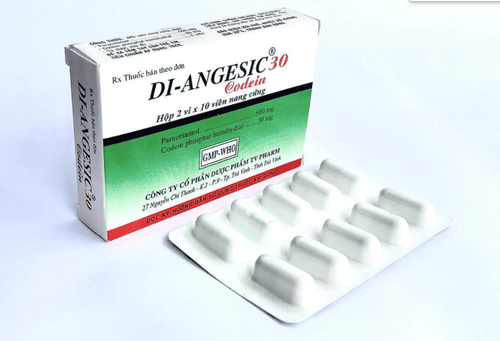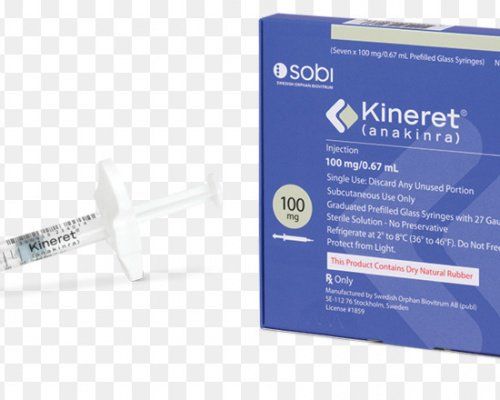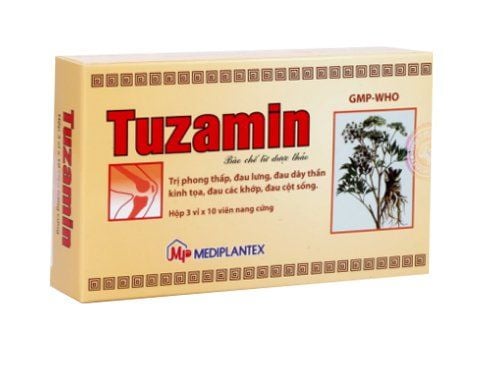This is an automatically translated article.
The article is professionally consulted by MSc, BS. Dang Manh Cuong - Radiologist - Radiology Department - Vinmec Central Park International General Hospital. The doctor has over 18 years of experience in the field of ultrasound - diagnostic imaging.Arthritis is a condition in which the joints become inflamed, the two most common being osteoarthritis (also known as degenerative joint disease) and rheumatoid arthritis (RA). Osteoarthritis can occur as a result of aging, or after other trauma to the joints. RA is an autoimmune disease that often occurs in young people, which is the body's defense to attack the lining of the joints.
Your doctor will likely run several imaging tests, including bone X-rays, CT, MRI, or ultrasound, to diagnose arthritis. Treatment will depend on the type, severity, and location of the arthritis and may include medication, therapy, or surgery.
1. What is arthritis?
Arthritis is inflammation in one or more joints in the body. A joint is an area where two or more bones come into contact and move together. The underlying cause varies with specific types of arthritis. There are more than 100 forms of arthritis with the two most common being osteoarthritis and rheumatoid arthritis.Osteoarthritis is also known as degenerative joint disease, in part due to degeneration of parts of the joints such as cartilage and increases with age. Increased wear and tear on the parts of the affected joint can lead to reactive inflammation. Rheumatoid arthritis (RA), is an autoimmune disease in which the body's defenses attack the normal joint lining. For this type of arthritis, inflammation in the lining of the joints and in the bones leads to damage to the joints, especially the cartilage. Other common causes of arthritis include injury, abnormal limb alignment, infection, autoimmune conditions other than rheumatoid arthritis, and abnormal joint conditions, such as gout.
Arthritis affects more than 40 million people in the United States. More than half of people have degenerative joint disease. Nearly 60 percent of people affected by arthritis are women. While arthritis mainly occurs in adults, children may be at risk for certain types of arthritis such as those caused by trauma and autoimmune diseases.
Although any joint in the body can be affected, particular forms of arthritis tend to occur in certain parts of the body. For example, rheumatoid arthritis usually affects the wrists and knuckles, feet, neck, and larger joints in the extremities while degenerative joint disease can affect the thumbs, knuckles, knees, hips, shoulders and lower spine. Other forms of arthritis primarily target the joints in the spine.
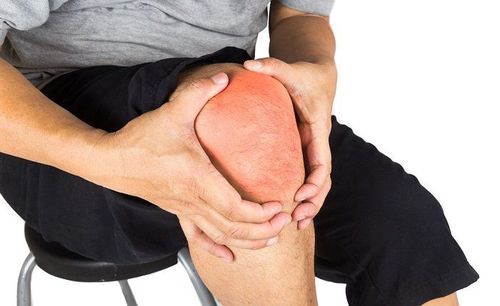
Joint pain, stiffness, or swelling that may occur in the morning or after activities Limited range of motion in joints or spine Pain and redness around joints Arthritis Prolonged impact on quality of life makes the patient feel tired, weak During the course of the disease, the patient may have no fever or low fever Morning stiffness may last for more than 1 hour Joint pain and swelling Continuously lasts all day, night and near morning increases, does not relieve pain when resting. The most common symptom is excruciating pain, which can affect one or more parts with cases of polyarthritis or severe progressive disease in the body.
2. Common imaging indications in arthritis
When diagnosing arthritis, your doctor conducts an examination of your entire body, including your spine, joints, skin, and eyes. You may undergo a number of blood tests to detect signs of inflammation. In cases where an infection or gout is suspected, the doctor will take a small amount of fluid from the joint with a needle to analyze the condition of the bones. In addition, to diagnose and evaluate arthritis, doctors often order to perform some of the following imaging methods:Bone X-ray: X-ray uses a low dose of radiation to create images of the joints. internal structures. X-rays show the bones and how they interact at the joint. X-rays are useful to evaluate the amount of cartilage at the ends of the bones, deformations and underlying conditions in the bones that can lead to arthritis, and bone changes that can be damaged by arthritis. Computed tomography (CT scan): CT scans combine special X-ray equipment with sophisticated computers to create a variety of pictures of the inside of the body. For people with arthritis, CT is often used to examine joints that are deep in the body and difficult to evaluate with conventional X-rays, especially in the spine or pelvis. Magnetic resonance imaging (MRI) of the joints: An MRI uses a strong magnetic field, radiofrequency pulses, and a computer to create detailed images of the body. The advantage of an MRI is that it shows both the bone and surrounding tissues - including cartilage, ligaments, and the inner lining of a joint. MRI is often used to detect abnormalities in the soft tissue components of the joint (not visible on X-rays) to determine if treatment is effective and to look for disease complications. Musculoskeletal ultrasound: Ultrasound uses a small transducer and gel to create images of the body from high-frequency sound waves. This method can provide detailed images of joints and surrounding soft tissues, mainly tissues located near the surface of the skin. In addition, your doctor may order you to perform a blood test to look for the presence of certain antibodies such as anti-CCP, rheumatoid factor (RF), antinuclear antibodies (ANA), etc. With that, experts can determine the type of arthritis you have.
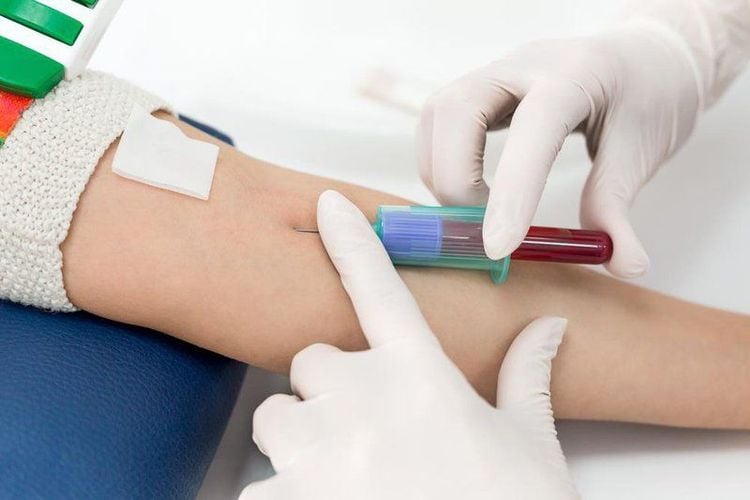
3. Treatment of arthritis
The purpose of arthritis treatment is to control the inflammatory process, protect joint function, prevent joint destruction while minimizing symptoms and improving quality of life. Treatment methods for arthritis include medication, rehabilitation, physical therapy, and surgery.Medications In the early stages of the disease, a combination of drugs should be used, including symptomatic drugs such as anti-inflammatory drugs, analgesics and DMARD's. It may be necessary to maintain treatment for many years, or even for life, based on the principle of the number of classes of drugs and the minimum effective dose. In the course of disease progression, additional corticosteroids will be used. Using DMARD's with the usual regimen that is effective, with few unwanted effects, is the simplest and cheapest in our country, which is methotrexate in combination with a synthetic antimalarial drug for the first five years, and then methotrexate single. Early initiation of aggressive therapy and consideration of early biologic DMARDs (in combination with methotrexate if no contraindications exist) in cases with severe prognostic factors (RF and/or High anti-CCP, severe disease activity, joint destruction).
Drugs to treat disease symptoms: glucocorticoids or non-steroidal anti-inflammatory drugs, depending on the level of disease activity, you can choose one of two anti-inflammatory drugs. Because patients have to take long-term, it is necessary to give preference to non-steroidal anti-inflammatory drugs of selective COX 2 inhibitors, noting contraindications and ways to avoid unwanted effects. Note, always add pain relievers (eg paracetamol group or combination). For cases requiring intra-articular injection, it is recommended to inject under ultrasound guidance (shoulder, hip) with deep joints and need to combine basic treatment of the disease.
Medicines to treat disease: Use of slow-acting anti-rheumatic drugs - Disease Modifying Anti-Rheumatism Drugs (DMARDs). Methotrexate (MTX), synthetic antimalarials (Hydroxychloroquine), Sulfasalazine (Salazopyrine), Leflunomide, Cyclosporin A... are classic DMARDs. In which, Methotrexate plays an important role in stabilizing the disease. You take MTX on a fixed day of the week with the minimum dose of MTX effect is 7.5mg/week and the maximum dose is 20-25mg/week. Pay attention to how to supplement folic acid enough while using MTX, at least 24 hours from the time of taking MTX to avoid reducing the effect of the drug. However, many cases still cannot be controlled, especially for patients with severe prognostic factors.
Due to the effectiveness and safety, biological DMARDs (Biological Therapy; Biotherapy) are indicated in the treatment of rheumatoid arthritis. Currently, biologic drugs have revolutionized the treatment of rheumatoid arthritis thanks to their high effectiveness, rapid action and good tolerability, based on an understanding of the pathogenesis of the disease. , about the function of each cell.

Tuberculosis and opportunistic infections, viral infections, especially hepatitis B and C viruses, cancer are the most ominous side effects of these drugs. Therefore, it is imperative to survey and screen for infections, vaccination status (Live and inactivated vaccines should not be used concurrently with biological drugs), hypersensitivity reactions, progressive liver disease and liver failure. , before prescribing biologics. To ensure both the effectiveness of treatment and the safety of the patient, it is important and necessary to manage and monitor closely before, during and after taking the drug out.
Rehabilitation To reduce stiffness, joint pain and prevent ankylosing spondylitis, there are many exercises you can do. In addition, arthritis patients need to avoid excessive movement in the damaged joints, avoid movements that can cause or increase pain. By equipping with appropriate tools: soft clothes and shoes that are easy to attach, fastened with velcro; light cups, spoons with long and large handles...help encourage patient movement and self-service, avoid standing or sitting for too long; Anti-support valve should be used for the painful joint.
Surgery If the patient has severe advanced arthritis, surgery is the necessary option. Several types of surgery can be performed, including:
Osteoplastic surgery Joint replacement surgery Stiffening surgery Surgical treatment Indicated for inflamed joints, persistent effusion, especially knee joint. Currently, in Vietnam, the new orthopedic and artificial joint replacement methods are mainly hip and knee replacement. To ensure the patient's motor function, recently, orthopedic surgery for the tendons, muscles, and small joints in the hand has begun to be implemented.
Vinmec International General Hospital with a system of modern facilities, medical equipment and a team of experts and doctors with many years of experience in medical examination and treatment, patients can rest assured to visit. examination and treatment at the Hospital.
Please dial HOTLINE for more information or register for an appointment HERE. Download MyVinmec app to make appointments faster and to manage your bookings easily.
Reference source: radiologyinfo.org





